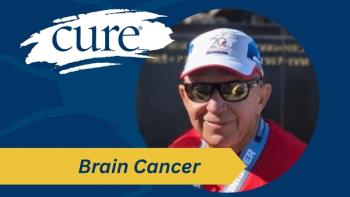
Expert Discusses What's on the Horizon in Triple-Negative Breast Cancer Care
CURE spoke with an expert on the future of treating triple-negative breast cancer, including the potential for immunotherapy, targeted therapy and AR-targeted agents.
With immunotherapy, androgen receptor (AR)-targeted agents and targeted therapies on the horizon, the treatment paradigm for patients with triple-negative breast cancer (TNBC) is rapidly shifting, says Hope S. Rugo, M.D.
To gain insight into this topic, CURE spoke with Rugo at the 2016 Lynn Sage Breast Cancer Symposium.
What's currently known about the efficacy of immunotherapies in TNBC? What makes TNBC unique?
Rugo is a professor of Medicine and director of the Breast Oncology Clinical Trials Program at the University of California, San Francisco (UCSF) Helen Diller Family Comprehensive Cancer Center.We don't really know that TNBC is unique, actually. We know that the mutational load of TNBC is higher than other subsets—you increase mutations and resistance over time. If mutational load correlates with neoantigens and the immunogenicity of the cancer itself, that may be what makes it uniquely sensitive. We know some of those tumors are basal-like. If you look at the non-HER2 enriched tumors, that may be another group that is resistant with a lot of host immune response where there can be a unique response to checkpoint inhibition.
What other agents are on the horizon in TNBC?
We're all disappointed with standard chemotherapy. We're past that and we want something else.
There have been a lot of studies that have focused on a variety of targeted agents with relatively disappointing results. There are a few areas of great excitement.
One is the area of immunotherapies. These are cytotoxic agents that are targeted by an antibody to a specific antigen. There's CDX-011 (glembatumumab vedotin), which is looking at monomethyl auristatin E (MMAE) toxin to glycoprotein NMB, which is overexpressed. It's overexpressed on many subsets of breast cancer, but researchers saw a signal in the TNBC group in their original trial. They're studying that more now in a larger phase 3 trial. The problem is that the expression is not very frequent. It may matter whether you're looking at metastatic tumor tissue or archived tissue from the early stage setting.
There's also been great interest in the drug sacituzumab (IMMU-132), a Trop-2-targeted toxin. That drug has shown nice single agent responses, some of which are quite durable in TNBC. There's a larger single agent cohort trial going on and there are plans for larger randomized trials.
What does the toxicity profile look like for these targeted agents?
Those have chemotherapy-related toxicities. Nothing unexpected: diarrhea, nausea, hair loss or thinning and low blood counts. These are pretty easily controlled.
We've given CDX-011 at our institution and certainly patients have toxicity, but we just have to be proactive about it. This is true of any agent—if you're proactive, patients will do pretty well.
We tend to think of these drugs as having less toxicity than chemotherapy, but compared to, say, weekly paclitaxel, the toxicities are just different.
How you view the state of AR antagonists to treat TNBC today?
We've seen some responses with Xtandi (enzalutamide) as well as older AR antagonists. It will be interesting to see how we determine which patients will benefit. There is a gene signature that's been developed, but it will be fascinating to see if that signature will help us find the patients who could be treated with AR antagonists. Of course, there are AR agonists that are being tested as well.
If we can identify that group of patients, it could potentially be an adjuvant regimen. That would be exciting, to prevent recurrence in patients who generally have less chemotherapy-sensitive disease.
How are AT antagonists tolerated?
The toxicity is quite modest. Most patients tolerate them quite well—physicians should watch for nausea and monitor liver enzymes. The toxicity profile is absolutely better than chemotherapy. Taking a pill will be easier than taking an immune checkpoint inhibitor, too. The idea of combining AR-targeted agents with checkpoint inhibitors is also exciting.
We need to treat smaller and smaller populations as we understand that there are subsets of TNBC that respond differently to other subsets. We've been hesitant to jump into that realm without significant data, but studies moving forward will be forced to do that.
What do you think the future looks like, overall, in this area?
There are a lot of exciting things going on. Moving forward, what we need to do are trials in collaboration—allowing for multi-site leadership. This will allow us to come to an answer faster. It's critical. There are international efforts going on in this regard.
We also need multi-arm studies, where we enroll patients into neoadjuvant and metastatic settings with tissue analysis and circulating cell-free DNA. These are critical paths for the future. The time where we're going to do a single study lead by a single individual and have some sites participate—that's going to be less advantageous. There has been a lot of interest, as well, from pharmaceutical companies in supporting new approaches to trials.





